Part Three: Charlotte Keskinen-Keith — “Pulled forward by my future self”
April 21, 2022
Many architecture students dream of working at famous international architecture offices. This four-part series tells the stories of three students from the Azrieli School of Architecture & Urbanism who landed at high-profile firms and the insights and opportunities they gained from their experiences.

Charlotte Keskinen-Keith
Where and when did you work?
I worked at MVRDV’s office in Rotterdam in 2019 through the spring/summer term.
I was taking the year off school to afford the life-saving medical procedures I needed as a trans-woman and to afford my education. OHIP and Carleton’s health insurance does not cover most life-saving transition-related medical procedures. I figured, since I am taking this year off as a leap of faith to transition, I might as well take a leap of faith in my career.
How did you get the job?
I applied through their website. I was lucky enough to have applied during the week that MVRDV was reviewing applicant portfolios. Luck is a tremendously large portion of how these opportunities occur.
We want to believe that opportunity comes from merit. It does not. Opportunity predominantly comes from luck and privilege, which stacks the deck in someone’s favour. Although, being persistent can create more luck that might come your way one day.
I applied to many other firms as well. Some I heard back from, some I did not. It is OK when this happens. Most times, reviewers do not even see your portfolio. Each application you submit is practice and gives insight into their firm.
What do you think helped you obtain the job?
First of all, it was due to luck that they saw my portfolio.
Second, before my gender transition, I had more financial stability and structural privilege, which enabled me to focus on my studies.
This led to having more time with professors, more time I could invest in learning software, more time working on my projects, a more comprehensive portfolio of work, and paradoxically more award money. Privilege begets privilege and justifies itself as a meritocracy. It is injustice.
To describe how my portfolio was selected: I approached each studio project as a mini-thesis, and I had a sense of humour in my work. My projects always aimed to challenge the status quo. Designing a building in school can come as a byproduct of your curiosity in disparate fields of study.
I was interested in designing ecologically net-positive architecture, the future of industrial manufacturing, and computational design. Additionally, my portfolio exhibited my way of thinking, personality, and a similar whimsical sense of humour as MVRDV.
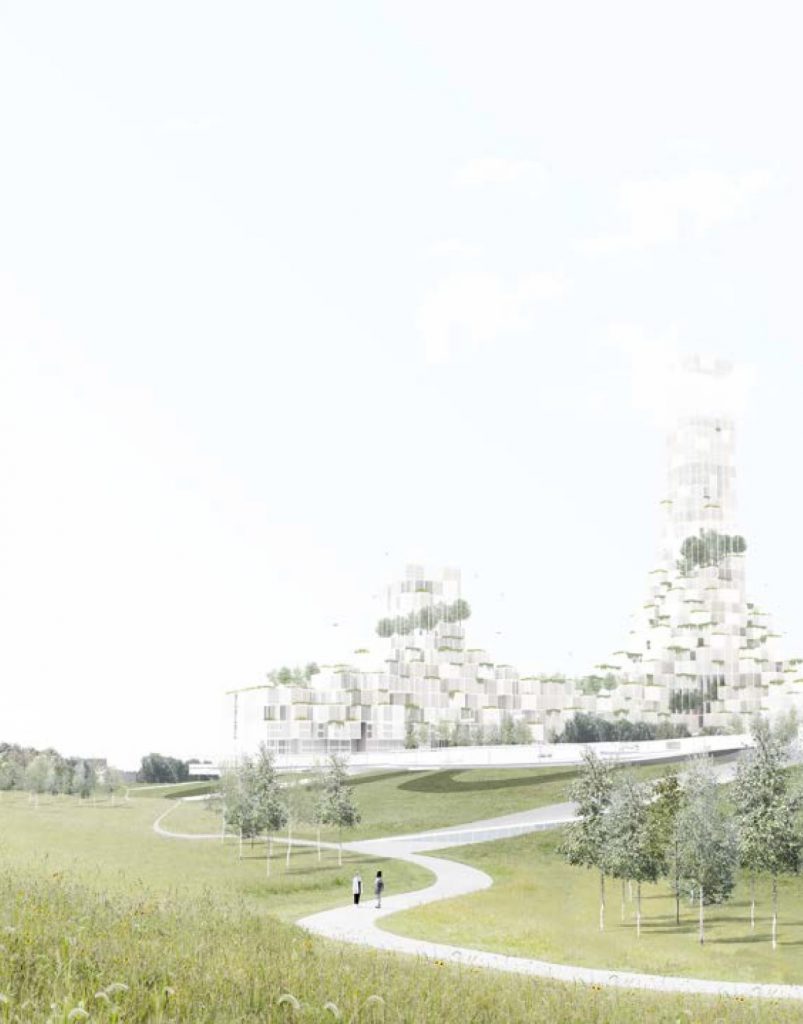
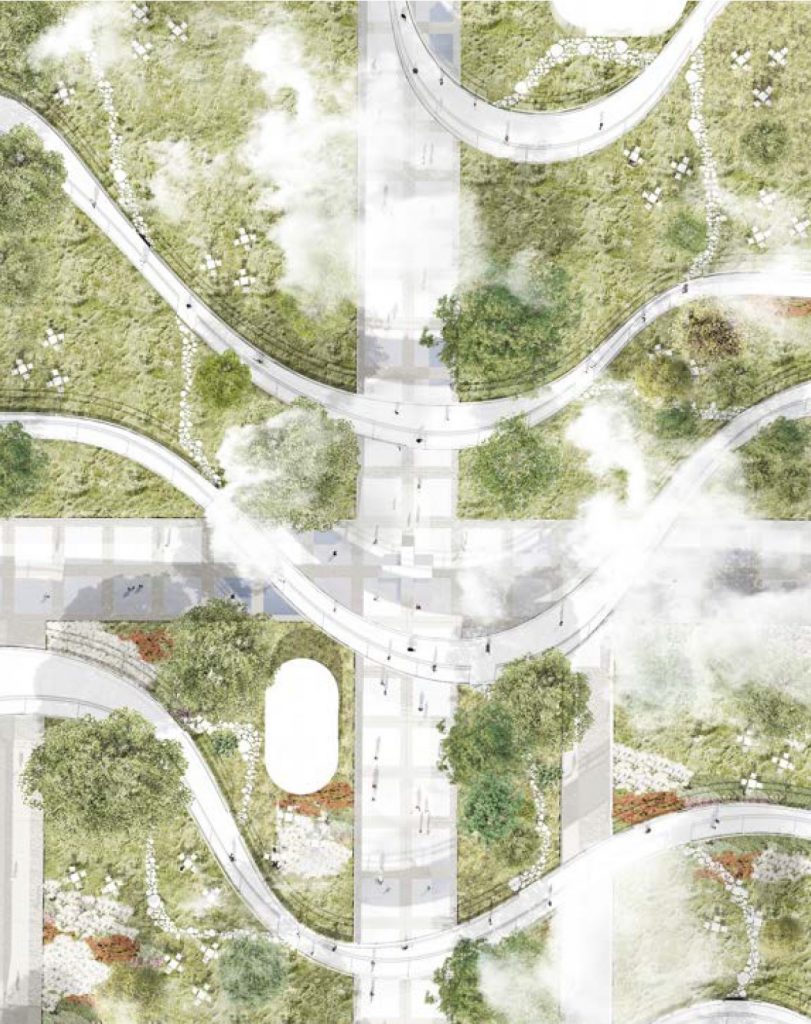
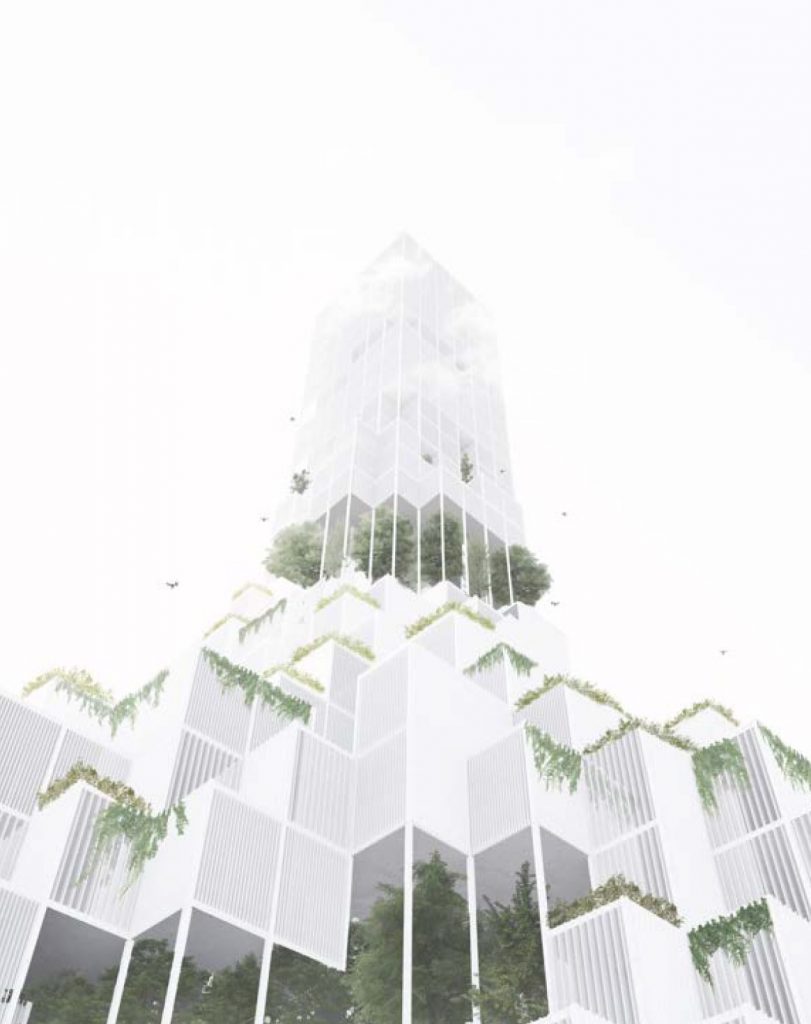
Fall 2019 Housing Studio work in collaboration with Zak Hamza. Images: Courtesy of Charlotte Keskinen-Keith
What skills, attributes are they seeking?
The portfolio will inherently show them your workflow. These firms are looking to see if your workflow can seamlessly fit into the firm and produce work at a quality they can use. Typically, this workflow utilizes Rhino, Revit, a render engine, and the Adobe suite for presentation. Grasshopper is a plus as most firms use it to streamline their workflow on large projects.
It must also show how you can graphically synthesize complex processes into a digestible and approachable presentation of work.
Finally, ethics is extremely important to MVRDV in answering the question, “Why architecture matters to you and how it can change the world.” This helps inspire them.
Many young architects bring the energy and passion that innovative firms build on. This may be naïve, but to them, some level of naivety enables creativity and divergent ideas. The more experienced architects can then ground these larger aspirations in reality.
I exhibited the aforementioned skills and ethics while also maintaining a light-hearted and playful nature. Absurdity is everywhere. We might as well make light of it.
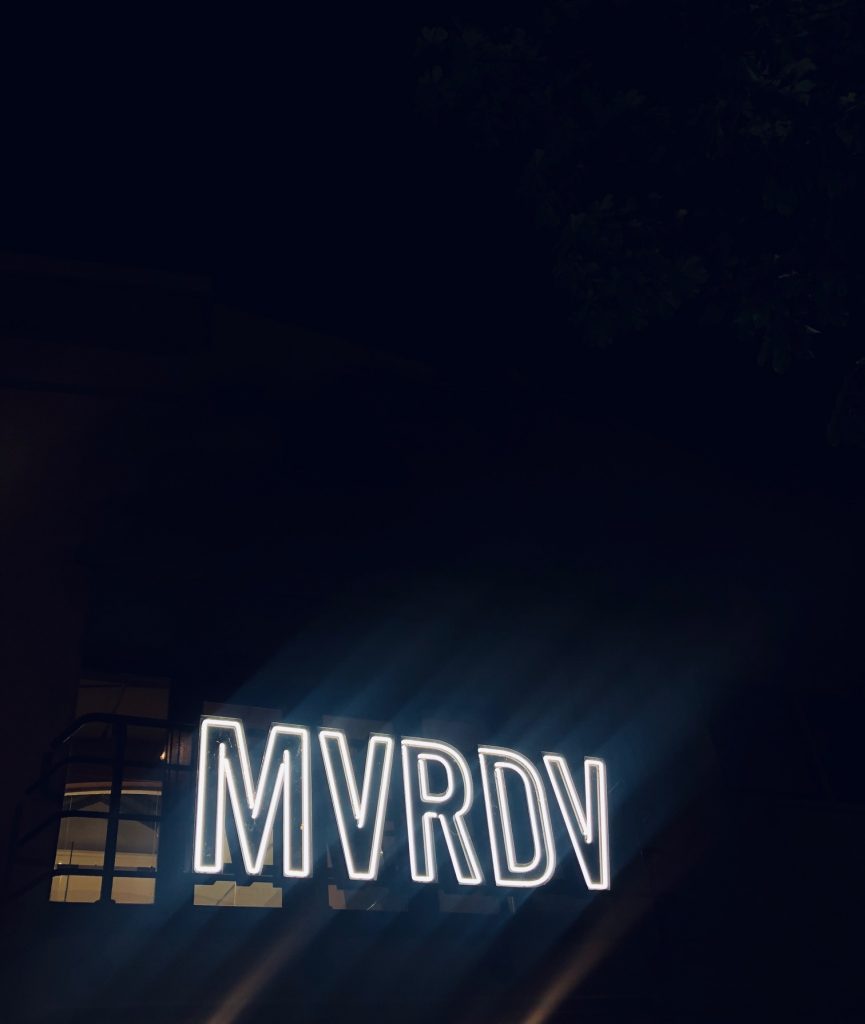
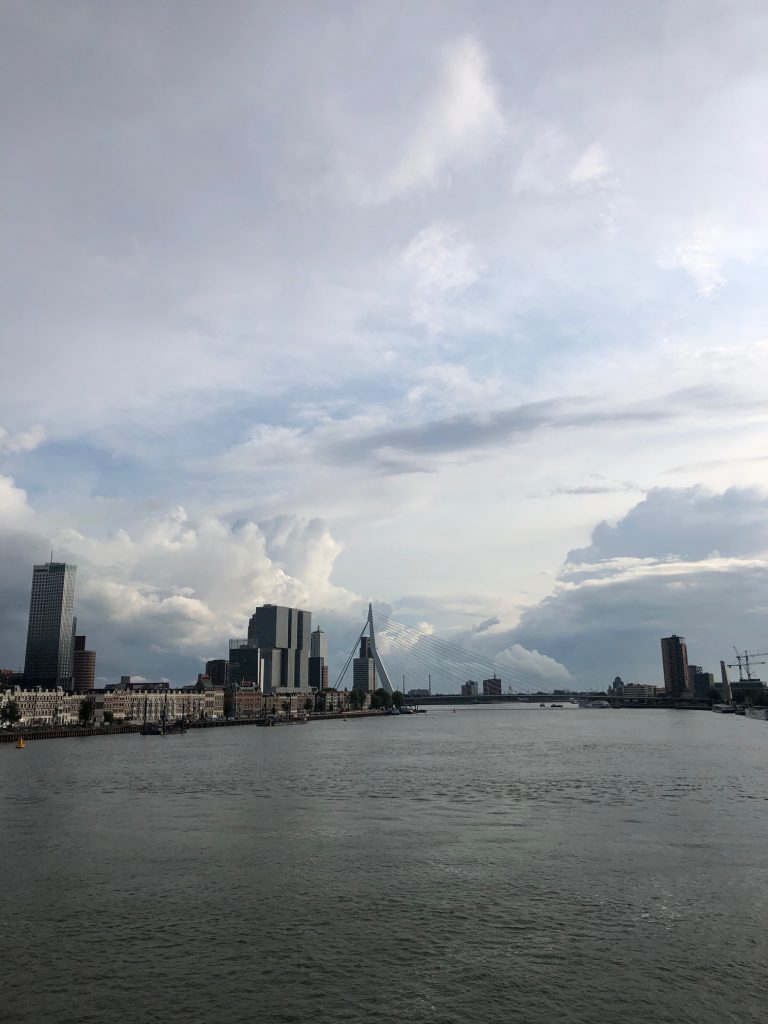
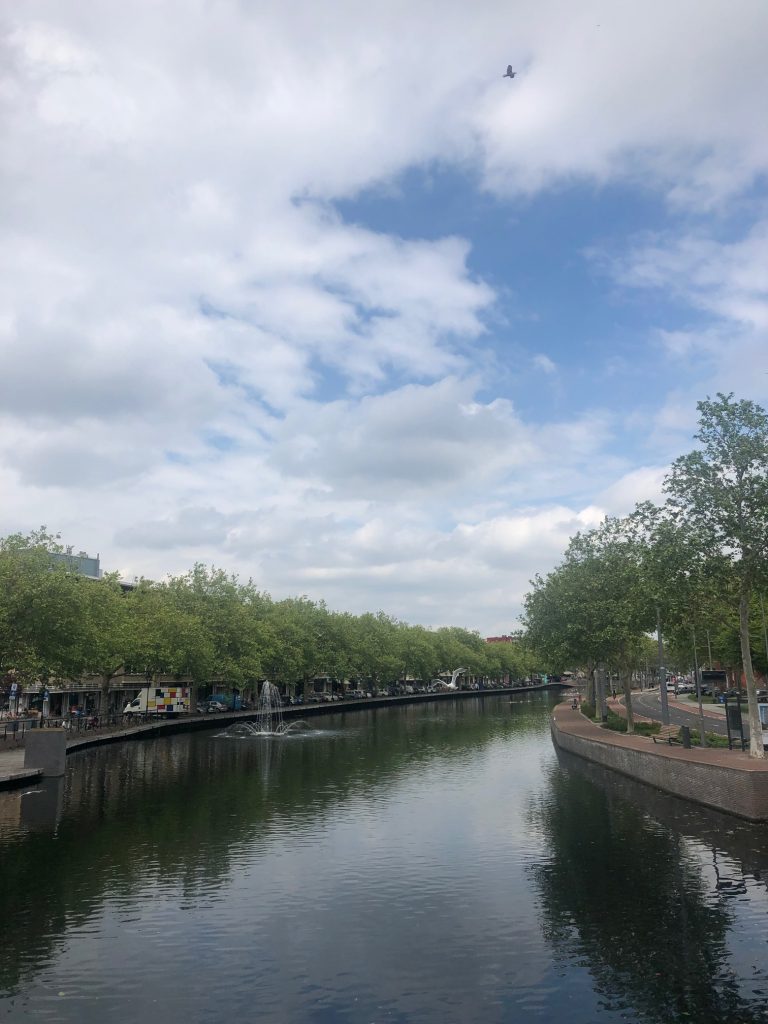
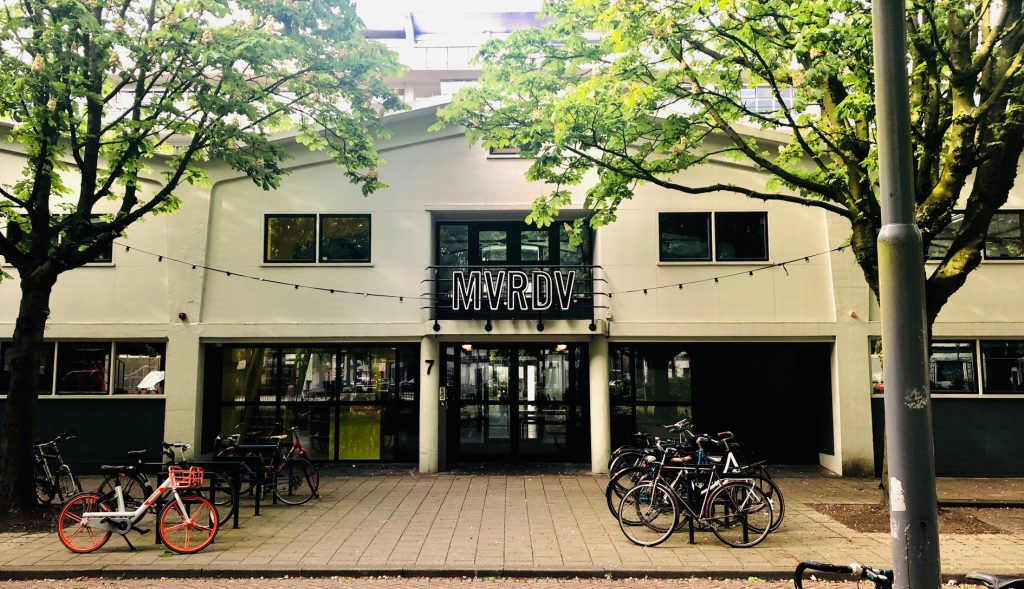
MVRDV offices and cityscapes in Rotterdam, The Netherlands. Images: Courtesy of Charlotte Keskinen-Keith
What did you work on?
A tower competition in Bo’an, China.
A major urban intervention in Guangzhou, China.
The Pulse Memorial and Museum Competition in Orlando, Florida, to honour the 49 2SLGBTQIA+ people murdered. This project was difficult for me emotionally and spiritually, but it was also rewarding to process this pain through creativity and camaraderie.
Was it a good, bad, or so-so experience, and why?
It was phenomenal for both my personal and career growth. At MVRDV, I was surrounded by brilliant people, working on projects that pushed my creativity and skills. I was expected to contribute equally and would often get into great conversations with the senior principals like Winy Mass about design intention and strategy.
My first day at MVRDV was also the first day I had come out as trans and lived authentically. It was profoundly nerve-wracking. I was also the youngest person and the first North American they had hired in years. I desperately wanted to back out. I just kept going forward as if being pulled forward by my future self.
Within the first month, I realized I was just as talented as many of my colleagues. It was revelationary. Firms are made up of people just as creative and talented as you are.
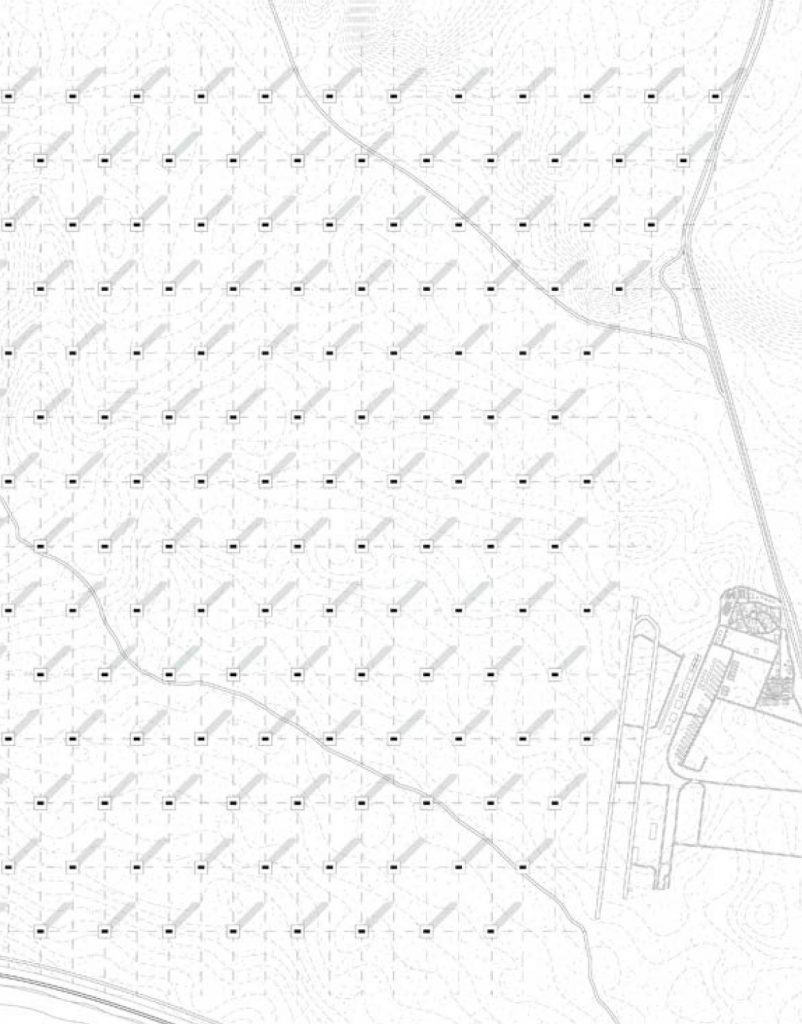

Drawings from a Winter 2020 project examining a new industrial landscape and the urban implications of a new construction paradigm. Images: Courtesy of Charlotte Keskinen-Keith
Taking this leap of faith was a profound transition in my life. It reoriented the possible.
What stands out for you?
The Pulse Museum was an impactful project for me to work on. The office built a team of queer architects that could communicate with each other on a deeper and more meaningful level. We worked together on this design project, each personally knowing the impacts of hate.
Our design discussions spill effortlessly from shared history, memories, communities, past, present, and shared aspirations. These meaningful conversations would pepper the design day and often extend into dinners together of Portuguese chicken and wine.
I watched how design is not just about physicality, practicality, and technicalities.
Design comes from us. It comes from us sharing and dreaming together. Architecture is the physical manifestation of our intentions. Architecture is us.

Fall 2019 Housing Studio work in collaboration with Zak Hamza. Image: Courtesy of Charlotte Keskinen-Keith
How do you think Carleton helped/prepared you?
In our first year, we studied installation artists. We then made ambitious installations inspired by those artists. That term brought our year together in a tight-knit group while allowing us to challenge ourselves and dream big. We began volunteering our time for each other and growing together.
It was not about competition. We did our projects for each other, rebelling against the status quo together. Our studio’s closeness and friendship taught us far more than otherwise.
This is also an elitist professional education that enables privilege to become structural. Students that have been invested in and have security will then invest more into their work and be further rewarded. This happens under a meritocratic narrative. A poetic justice narrative. An individualistic narrative. Narratives of superiority, not of excellence. These are myths pervasive in the broader culture and not exclusive to Carleton. If anything, Carleton is more progressive than most in recognizing this. But it permeates nonetheless.
Many in our studio group did not invest their self-worth in a meritocratic myth. We looked out for each other. We cared for and supported each other. This was the greatest lesson of all.
What was the big takeaway from this work experience for you?
You are just as capable as anyone else. Meritocracy is how privilege justifies itself to itself. Opportunity is predominantly luck. Paradoxically, the world is also like clay. Have fun sculpting.
Building a supportive community provides more success than an individual effort. Have a sense of humour with what is serious.
Charlotte Keskinen-Keith worked as an intern architect at MVRDV from April 2019 to August 2019. She is currently working at gh3* in Toronto. She has been accepted to the Master of Architecture program at the University of Toronto and will start in September 2022.